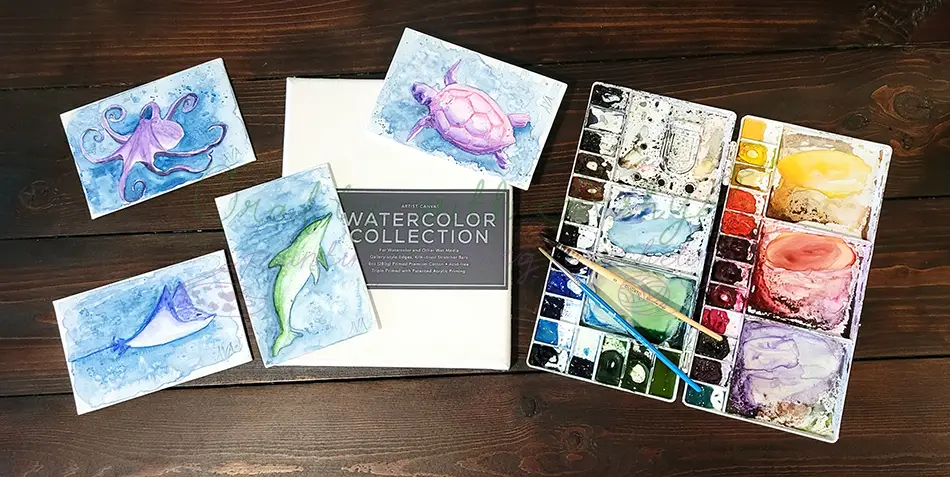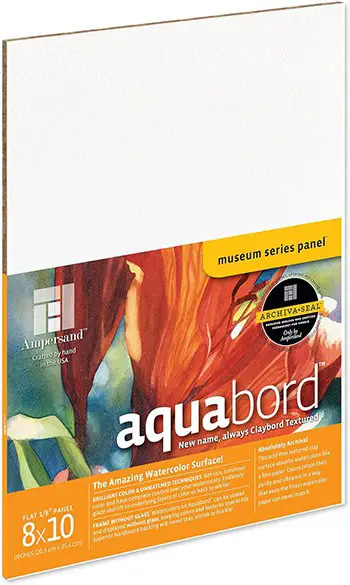Watercolor is typically used on watercolor paper, but with a bit of prep and experimenting, you can use a variety of surfaces, including canvas, for watercolor paintings.
Canvas can be used as a support surface for watercolor as long as it is coated with an absorbent medium. Commercially available watercolor canvases are available, or you can use watercolor ground, also known as absorbent ground, to prime any canvas before use with watercolor.
Painting with watercolor on canvas presents an opportunity for different outcomes than painting with watercolor on paper. Let’s look at some more considerations of using watercolor canvas.
What is Watercolor Canvas?
Watercolor canvas is a type of canvas that is specially prepared to accept a water-based medium. It is available in sheets, boards, or stretched on a frame. It is typically made of cotton or linen. The best quality will be 100% cotton, acid-free, archival quality.
Traditionally, canvas is primed to be non-absorbent for use with oil or acrylic paints, which sit on top of the surface. Watercolor requires an absorbent surface, therefore, watercolor canvas is primed with absorbent ground or watercolor ground. This allows the paint to absorb into the canvas, but it slows the rate of absorption to allow working time.
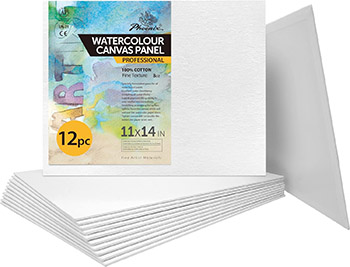
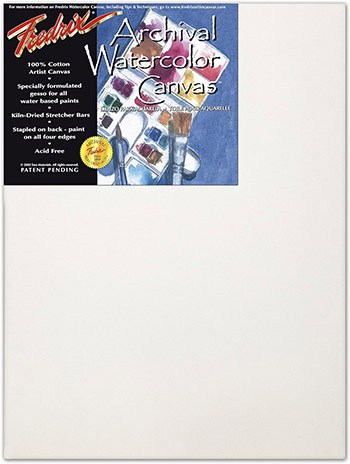
How to Make a Watercolor Canvas
If you want to prepare your own watercolor canvas, you can purchase canvas, stretch it, gesso it, and then apply absorbent or watercolor ground in thin layers. You could also purchase a canvas designed for oils or acrylics and brush or roll layers of watercolor ground to prepare it for the water-based medium.
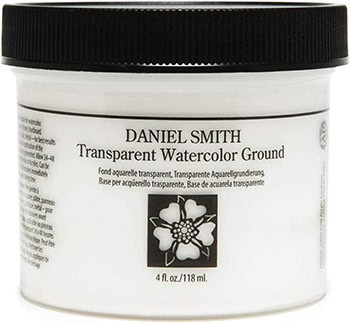
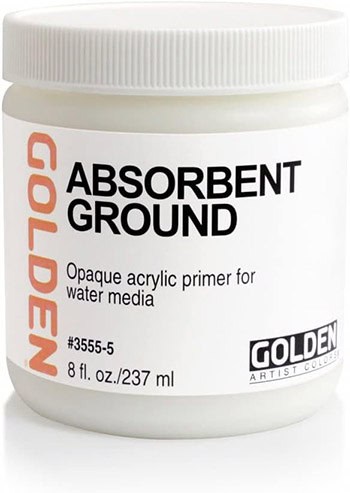
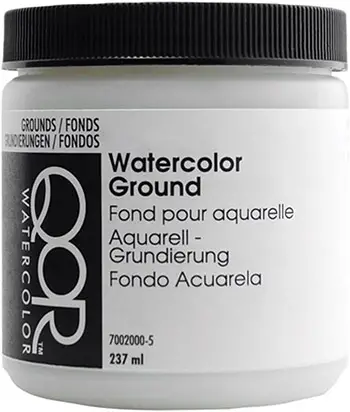
If you are priming canvas with watercolor ground, you will want to ensure a thin, even application of the ground. You can use a large brush or a roller. You can smooth out the layer by using a minimally damp brush.
Ensure the layers are completely dry, following the manufacturer’s instructions, before moving on to painting. Typically, it is best to allow 24 hours for drying. You can prepare multiple surfaces at one time so that in the future, you are ready to go when inspiration strikes!
Why Do People Paint on Canvas Instead of Paper?
Many people choose to paint on canvas versus watercolor paper because of three major advantages.
- It does not warp or buckle with water application.
- You can display a stretched canvas without framing.
- It is more durable than paper.
What is The Difference Between Watercolor Canvas and Watercolor Paper?
Watercolor canvas and watercolor paper are both surfaces used for painting with watercolor paints, but they have several differences:
- Material:
- Watercolor canvas is typically made from cotton or linen. It is coated with a special primer that allows watercolor paint to sit on the surface without being absorbed too quickly.
- Watercolor paper is also often made of cotton, though it can be made of cellulose or wood pulp. The paper is “sized,” which prepares it for accepting watercolor paint. Sizing is the addition of a substance, usually gelatin, internally and/or externally during the manufacturing of the paper to improve absorbency, strength, and consistency.
- Texture:
- Watercolor canvas often has a smoother surface than traditional canvas, but it still retains some texture. If you prepare a conventional canvas with watercolor ground, it will retain the texture of the canvas.
- Watercolor paper comes in various textures, including highly textured rough, moderately textured cold-pressed, and smooth hot-pressed.
- Durability:
- Watercolor canvas is very durable and will not tear or pill even with lifting, scrubbing, masking, and scraping techniques.
- Watercolor paper varies in durability significantly but often sustains damage to the fibers when aggressively lifting, scrubbing, or scraping. Paper can also be damaged when using masking techniques.
- Absorbency:
- Watercolor canvas is generally less absorbent, allowing the paint to be manipulated more easily and often for longer. This allows for easier lifting, though it results in more difficulty glazing due to easily disturbing or lifting the previous layers of paint.
- Watercolor paper is highly absorbent, allowing the paint to penetrate the paper’s fibers. This often results in less working time for wet-in-wet and a decreased ability to lift colors after application.
- Stretching:
- Watercolor canvas is usually stretched on a wooden frame or attached to a stiff board, providing a rigid support for painting. Due to the supports, watercolor canvas will not warp with water application.
- Watercolor paper comes in various weights and thicknesses, ranging from lightweight sketchbook paper to heavyweight watercolor blocks. Watercolor paper often warps with water application, which is best prevented by stretching the watercolor paper prior to use.
- Displaying:
- Watercolor canvases can be hung without framing, with a float frame option, or framed. If hanging without protective glass, it is recommended to seal the painting to prevent moisture from damaging your watercolor. The display options are a major draw of painting on stretched canvas.
- Watercolor paper requires preparation to hang. Most often, framing with a mat and glass is preferred. However, watercolor paper can be fixed to wooden blocks or other surfaces and sealed for a frameless option.
In summary, while watercolor canvas and paper are both suitable surfaces for painting with watercolor paints, they offer a different painting experience. If you always use watercolor paper and are planning to try out canvas, understand that you may have to alter your painting approach and techniques. Just like jumping from cold-pressed to hot-pressed paper, there is a learning curve!
Watercolor Aquabord (A Different Option than Watercolor Canvas)
Ampersand Watercolor Aquabord is a unique product. It is a clay-surfaced panel prepared to have a similar texture and absorbency to cold-pressed paper. It is similar to canvas in support and durability, allowing for scrubbing and aggressive lifting. It does not warp with water application and can be hung without protective glass, just like canvas.
How Do You Seal a Painting on Watercolor Canvas or Aquabord?
To seal a watercolor painting on canvas or aquabord, you should use a sealant that is NOT water-based. You can choose a brush-on or spray-on version. These come in matte or glossy finishes. Most require 3 to 4 coats to effectively protect and waterproof your watercolor paintings.
Check out Jackson’s Art for a very in-depth discussion about sealing watercolor paintings. An artist experimented with many different sealants and fixative options. It offers a wealth of knowledge.
Let me know if you have any additional questions about watercolor surfaces; I will always try to find the answers!
Now it is time for YOU to get Crafty with Ashy!
Be sure to subscribe and follow me so you don’t miss any inspiration!

